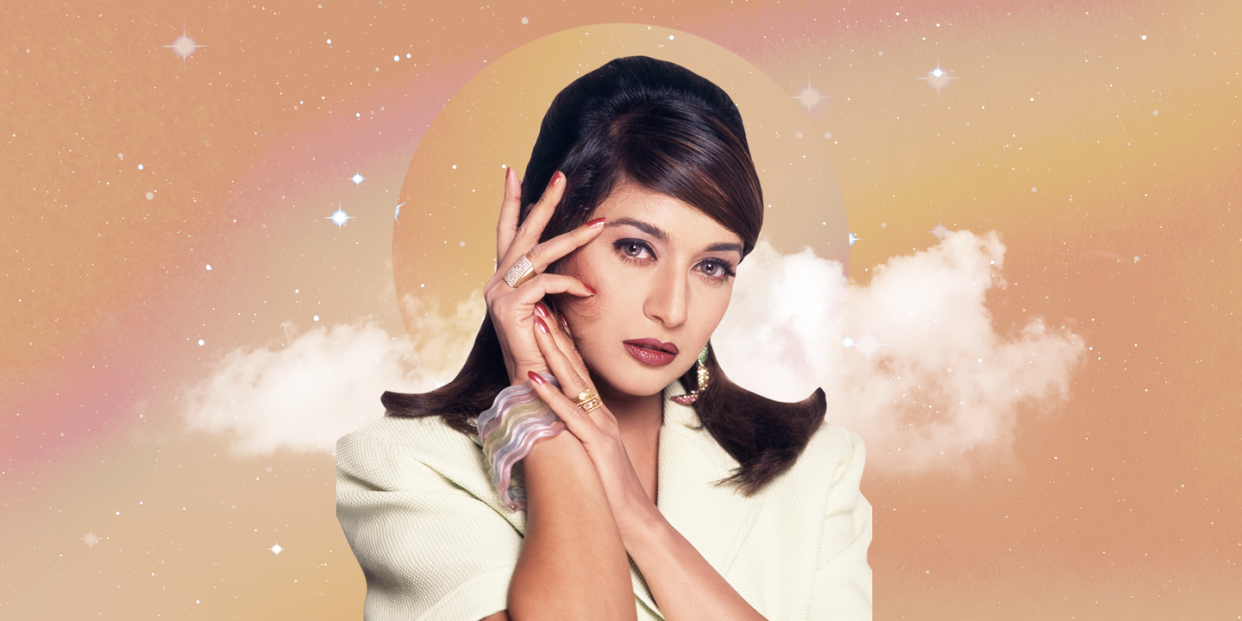Face Readers Determine Your Birth Chart and Your Future by Looking at Your Nose (and Eyes and Forehead)

If you or anyone you know has an internet connection, you’ve probably watched Netflix’s new reality TV series Indian Matchmaking by now. It follows Mumbai-based matchmaker Sima Taparia as she works to find suitable life partners for hopeful, eligible, and at times reluctant Indian singles—all with the help of their eager families.
The series offers a glimpse into the custom of arranged marriage—or as Taparia puts it in the series, marriage: “In India, we don’t say ‘arranged marriage.’ There is marriage and then there is ‘love marriage.’”
Although marriage customs in India have evolved over time, certain traditions remain. Along with a collection of “biodata” and a life coach, Taparia’s matchmaking tool kit includes on-call astrologers and a face reader to determine the personality, compatibility, and future of the potential matches. “Ultimately, our efforts are meaningless if the stars are not aligned,” Taparia says in the series.
Most people are familiar with astrology but probably not face reading. When Taparia consulted face reader Janardhan Dhurbe for insight into the prospective matches, personalities, and their future, it sent the internet buzzing. Let’s dig deeper.
What is face reading?
Face reading, or physiognomy, is an ancient practice of assessing a person’s personality, ailments, and fortune based on their facial shape and features. It has roots in various cultures, notably in India, China, and Greece.
What can we learn from face reading?
Face reading is used across cultures and classes, including by hopeful parents to determine suitable marriage proposals. While Western physiognomy tends to focus on character traits, the Chinese system Mian Xiang has a “100-year map” in which moles, scars, or markings indicate significant events that will happen at a particular age. In India, various Vedic texts reference face reading, or mukh samudrik. The Samudrika Shastra (which roughly translates to “knowledge of body features”) details the study of face reading, aura reading, and whole-body analysis.
In Vedic cosmology, manifested reality is composed of five elements, or the panchabhoota—agni, or fire; prthvi, or earth; vayu, or air; jala, or water; and akasha, or space/ether. These correspond with five basic face shapes, offering insight into temperament and personality. For example, a rounded face indicates the water element and a sensitive personality, and a square face is related to the earth element and shows a grounded, practical nature.
What does face reading have to do with astrology?
In India, a jyotishi, or astrologer, generally has a basic knowledge of palmistry, face reading, numerology, phrenology, and gemology. By studying a person’s face, astrologers can judge dominant or active planets and elements in an individual’s chart. For example, a well-defined and well-proportioned nose indicates a strong Jupiter (planet of knowledge and wisdom) and is considered to be the mark of intelligence—and someone who would make a good astrologer.
Face reading not only offers insight into temperament but also allows astrologers to make predictions regarding health, finances, longevity, marriage, life, and destiny. Western astrology has similar traditions—for example, a person’s Rising sign is considered representative of their physical appearance.
In fact, in ancient times, if they didn’t have a birth chart, an astrologer would look at a person’s features to gauge dominant planets, prescribe necessary remedies, and make predictions. While it’s possible to have a missing or inaccurate birth time, the face doesn’t lie.
Does face reading work?
On Indian Matchmaking, Dhurbe uses face reading to make fairly accurate judgments about the personalities of the candidates. Notably, when Taparia asks if Nadia and Vinay are compatible, he answers, “Their paths will align.” Then he pauses thoughtfully and diplomatically adds, “She will have twins.” Their paths did align but not for long. If you pay close attention, you’ll notice the face reader doesn’t comment on the longevity of the couple’s relationship. And hey, Nadia may still have twins at some point!
If face reading sounds out there to you, consider this: Newborn babies learn to interpret facial expressions from birth. As adults, we subconsciously (or consciously) gauge attractiveness based on facial symmetry. Even doctors examine patients’ faces and eyes to note their symptoms.
Whether or not Indian Matchmaking made you wish you had your own personal face reader on call, the truth is, we’re all face readers. Consciously or unconsciously, we read faces every day.
You Might Also Like

